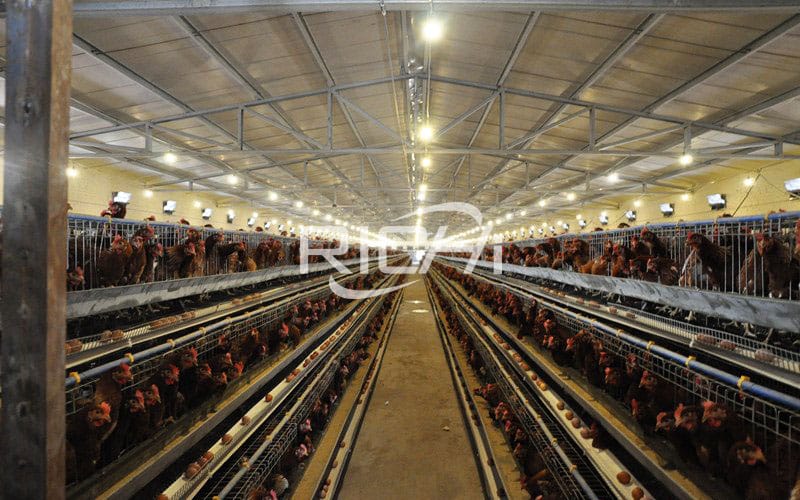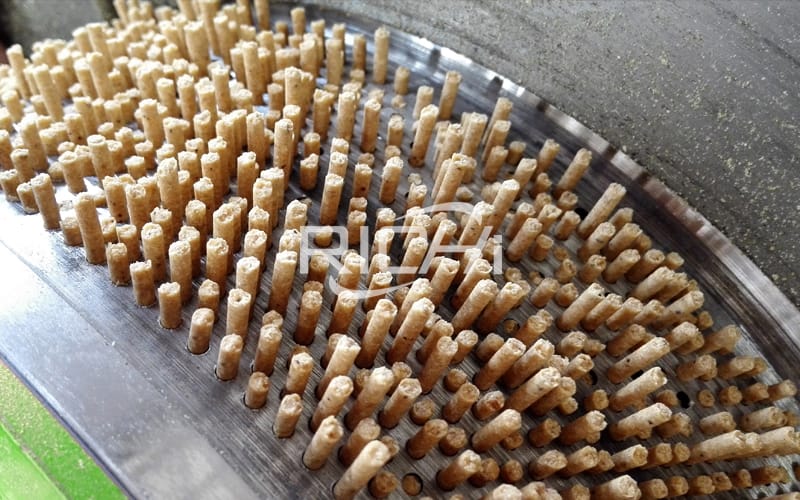How to reduce broken eggs and make money for layer chicken farms?
For layer farmers, breeding is not easy. During the breeding process, almost every household will encounter many problems such as cracked eggs, sand-preserved eggs, soft-shelled eggs, white-shelled eggs, and thin-shelled eggs. The interests of households are too much affected, so what factors will affect the quality of eggshells?

1. Factors affecting eggshell quality
(1) Heredity
There are differences in eggshell strength and eggshell color between different varieties and strains. The color, thickness, and specific gravity of eggs are all affected by genetics. For example, the thickness of white shell eggs is slightly larger than that of powder shell eggs.
(2) Laying cycle
As the laying cycle of chickens increases, the ability of the chickens to absorb fat-soluble vitamins and minerals decreases, and the strength and thickness of the eggshells also decrease. Therefore, the longer the laying cycle of the chickens, the better the quality of the eggshells. The worse, the more broken eggs.
(3) Absorption of minerals and vitamins in layer chicken feed
As the main factor affecting the quality of eggshells, in the actual production process, if the eggshell breakage rate is high, it is necessary to consider whether it is due to digestion and absorption. The main nutrients that affect the quality of the eggshell are calcium, phosphorus, magnesium, etc. The content of calcium in the diet affects the thickness and strength of the eggshell. When the digestion and absorption rate is low, the thickness of the eggshell decreases, and absorption and metabolism disorders will occur, resulting in small eggs, thin shells, and decreased egg production.
(4) Temperature factor
When the temperature is too high, the thickness of the eggshell, the specific gravity of the egg and the strength of the eggshell will decrease, and the high temperature will reduce the feed intake, which will affect the egg production rate and the quality of the eggshell. The large room space makes the eggs extremely easy to break.
(5) Stress
In the breeding process, stress cannot be ignored. In many cases, stress not only affects egg production rate, but also affects egg quality and damaged eggs. The specific manifestations are the decrease in egg production rate and the increase in deformed eggs, soft shell eggs and broken eggs.
(6) Disease
Many diseases affect the quality of eggshells, such as salpingitis, Newcastle disease, bronchitis, and chronic respiratory diseases, which will make eggshells thinner, increase the rate of egg breakage, and even soft-shell eggs.
(7) Feed additives randomly
Practice has proved that rational use of additives can improve the quality of eggshells. At present, there are too many types of additives in our country, and suitable additives must be selected to make up for what is lacking and control the amount reasonably. Otherwise, the balance of various nutrients in the chicken body and normal material metabolism will be broken, and the eggshell will become thin and fragile.
(8) Aflatoxin poisoning
Improper feed management can cause mildew. After feeding, the liver and kidneys of chickens are poisoned, and the metabolism of VD is destroyed, resulting in chickens becoming lighter weight, poorer disease resistance, low egg production, and thinning and soft eggshells.
2. How can we enhance the quality of eggshells?

To enhance the quality of eggshells, we must start with the chicken feed formula, adopt scientific calcium to phosphorus ratio, improve eggshell quality, reduce damage rate, and improve economic benefits.
Calcium and phosphorus are the components of bones. 65% to 70% of the total minerals in broilers are compounds of calcium and phosphorus. The calcium in bones accounts for 99% of the total body, and the remaining 1% is in blood, lymph and other tissues. Calcium plays an important role in blood coagulation. Together with sodium and potassium, calcium maintains the normal functions of the heart, muscles and nerves. Calcium plays an important role in the acid-base balance of the body.
About 50% to 60% of calcium in conventional feed can be absorbed and utilized by laying hens, and the calcium content in laying hens diets is required to be 0.6% to 1%. Phosphorus in bone accounts for 80% of total body phosphorus and 0.8% of fat-free chicken body. Most of the phosphorus in the laying hens body is in an organic state. It is a component of nucleic acid, high-energy phosphoric acid, phosphoprotein, phospholipid, creatinine phosphate, hexose phosphate and other substances. The blood also contains a part of phosphorus, which is also involved in many kinds of laying hens. metabolism. Laying hens can use 30% of the total organic phosphorus in the feed, and the total phosphorus content in the laying hens diet is required to be 0.6%.
When preparing laying hens diets, in addition to meeting the needs of calcium and phosphorus, the ratio of calcium to phosphorus should be adjusted according to the feeding standards. If the ratio of calcium to phosphorus in the diet is not appropriate, even if the content of a certain element is high, it is difficult to fully absorb and utilize it. For laying hens, it is better to control the ratio of calcium to phosphorus at 1.2 to 1.5:1. The calcium content should not be too much, otherwise it will affect the growth and development of the chicks, as well as the absorption of phosphorus, magnesium, manganese, zinc and other elements.
In addition, pay attention to the state of calcium and phosphorus in laying hens feed. If the calcium and phosphorus are in a combined state and are not easily dissolved, even if the content in the feed is sufficient, it is difficult for laying hens to absorb it, and deficiency will still occur. The utilization rate of phytate phosphorus in broilers is low, about 30% before 4 weeks of age, and about 50% after 4 weeks of age. The utilization rate of inorganic phosphorus in broilers can reach 100%. Therefore, a part of inorganic phosphorus must be supplemented in the layers diet, and special attention should be paid to the lack of fishmeal in the diet.
[More related knowledge about laying hens feed]
(1)Simple home use poultry chicken layer feed pellet making line machine
(2)5 ton per hour poultry feedstuff powder feed processing unit line
(3)Poultry animal feed pellet making line machine to make layer feed
(4)How to make pellet feed for layers?
(5)Layer feed formula and raw materials
(6)Animal poultry layer feed making machine for sale
(7)15t/h automatic complete poultry layer feed pellet line with reasonable price
If you want to built one complete pellet production line in your country, pls send the inquiry to us. We will customized design according to your requirement.



